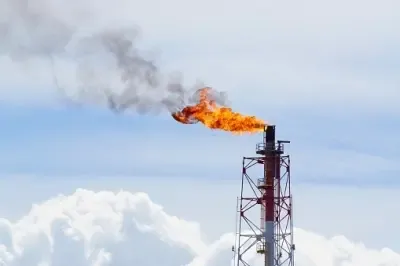Could Climate Change Increase Hailstorm Risks for Major Australian Cities?

Synopsis
Key Takeaways
- Australian cities face increased hailstorm risks due to climate change.
- Hailstone sizes are expected to rise significantly.
- Melbourne could see 10 cm hailstones every three years.
- Hail damage has accounted for over 20% of insured losses since 1967.
- Stronger infrastructure and building standards are essential for protection.
Sydney, July 29 (NationPress) As the climate continues to warm, Australian metropolitan areas may encounter increasingly severe and frequent hailstorms, according to new research findings. Key urban locations such as Sydney, Melbourne, Canberra, and Perth are projected to face larger hailstones and an augmented risk of damaging hail incidents, as detailed in a statement released on Tuesday by the University of New South Wales (UNSW).
The research, which investigated simulated weather patterns within a warming climate, indicates that hailstorms will become more prevalent in Brisbane, Sydney, and Canberra, as reported by the Xinhua news agency.
Expectations are that hailstone sizes will escalate across several of these cities, and future storms of greater intensity could heighten the likelihood of large-diameter hail, according to the study's lead author, Tim Raupach from UNSW's Institute for Climate Risk and Response.
In Melbourne, the study reveals that hailstones measuring 10 cm, which were once observed every 20 years, could now occur every three years as climate change progresses.
Hail damage has accounted for over 20 percent of insured losses in Australia from 1967 to 2023, primarily due to stronger storm updrafts that lead to the formation of larger, more destructive hailstones, as outlined in the study published in Geophysical Research Letters by the American Geophysical Union.
While hail can manifest nationwide, Australia's eastern coastline is particularly susceptible. Remote regions such as Western Australia's goldfields and the Gulf of Carpentaria also experience severe hail, although available data is scarce.
Researchers have pointed out that the growing solar energy sector in Australia is increasingly at risk of hail damage; however, experts assert that this should drive the development of stronger infrastructure and resilience rather than hinder investments in renewables.
The authors highlighted that Australia's current building regulations lack adequate measures for hail resilience, leaving numerous properties at risk. Furthermore, while hail warnings and insurance options are available, physical safeguards such as covered parking and robust roofing are essential for protection.
Raupach emphasized the necessity of reducing greenhouse gas emissions to alleviate the intensity of extreme weather events and advocated for further research on urban design strategies that could minimize hailstorm risks in the future.









